Porcelain tile is a popular choice for both flooring and wall surfaces, celebrated for its durability, low maintenance requirements, and water resistance. Its ability to withstand wear and tear while maintaining a sleek and attractive appearance makes it ideal for various spaces, from kitchens to bathrooms.
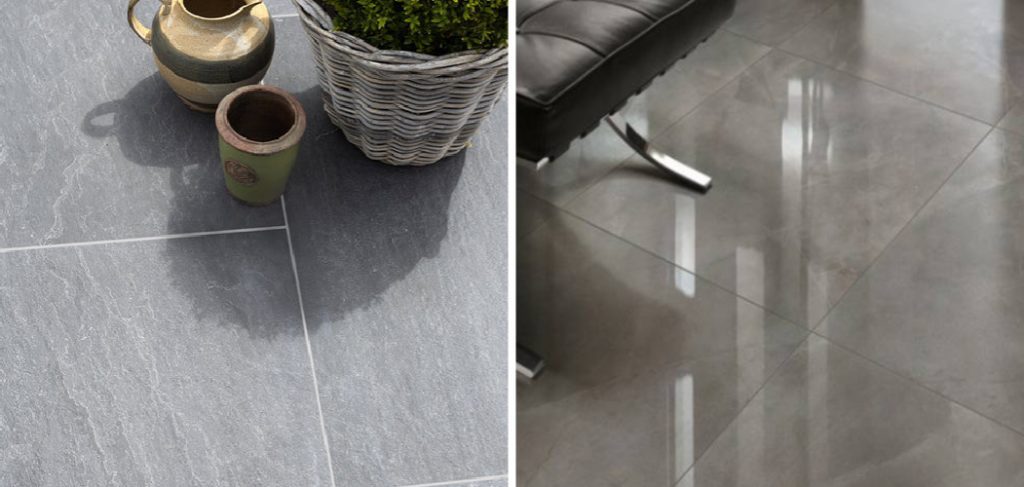
However, even a material as resilient as porcelain requires proper care to maintain its pristine condition over time. Regular cleaning not only extends the lifespan of porcelain tile but also preserves its beauty and prevents potential damage caused by neglect or improper maintenance. This article will guide you through everything you need to know about how to care for porcelain tile, including daily maintenance routines, effective deep cleaning methods, grout care techniques, stain removal tips, and long-term upkeep recommendations to help you enjoy your tiles for years to come.
Understanding Porcelain Tile Types
Porcelain tiles come in a variety of types, each with unique characteristics that influence their appearance, durability, and maintenance needs. By identifying your tile type, you can select the most effective cleaning methods and products to ensure optimal results without causing damage.
Glazed vs. Unglazed Porcelain
Glazed porcelain tiles feature a protective coating that enhances their stain resistance, making cleaning more straightforward. These tiles often come in a wide range of colors and patterns, making them an excellent choice for decorative spaces.
On the other hand, unglazed porcelain tiles offer a more natural and rugged finish, showcasing the tile’s true color and texture. However, they are more susceptible to staining and may require sealing to provide additional protection against moisture and spills.
Polished vs. Matte Finishes
Polished porcelain tiles have a smooth, reflective surface that lends a sleek and elegant look to any space. While visually appealing, they tend to show smudges, scratches, and dirt more easily, requiring frequent attention to maintain their sheen. Alternatively, matte-finished tiles provide a softer, understated appearance with superior slip resistance, making them a practical choice for areas prone to water exposure, such as bathrooms and kitchens.
Understanding the type of porcelain tile you have is essential to ensure proper care and long-lasting beauty. Always tailor your maintenance routine and product choices to suit the specific characteristics of your tiles.
Daily and Weekly Cleaning Routine
Daily Maintenance
To keep your porcelain tiles pristine, incorporate simple daily habits into your routine. Begin by sweeping or vacuuming regularly to remove dirt, dust, and debris that might scratch the tiles over time. Using a microfiber dust mop is highly recommended as it effectively traps fine particles without leaving residue or scratches. Pay extra attention to high-traffic areas to prevent the buildup of grime and maintain your tiles’ polished appearance.
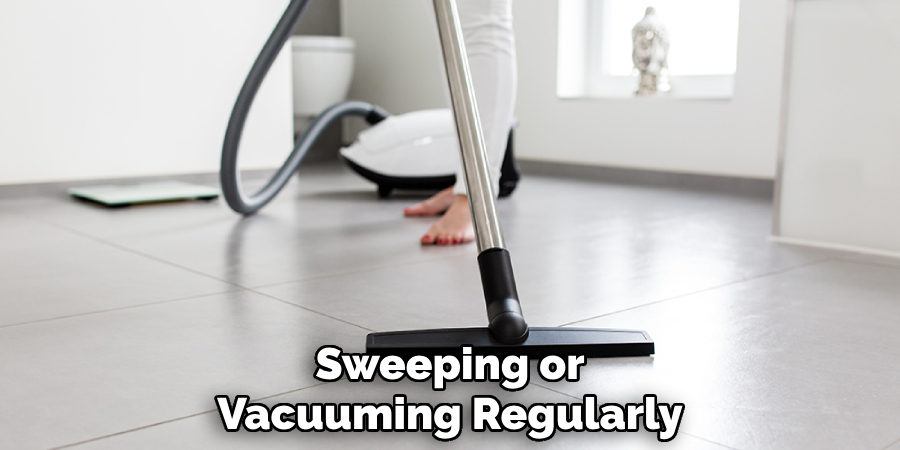
Weekly Cleaning
For a more thorough clean, set aside time each week to mop your porcelain tiles with warm water and a mild pH-neutral cleaner. This ensures the removal of accumulated dirt while protecting the tiles from harsh chemicals that may cause dullness or damage. Acidic or abrasive cleaners should be strictly avoided, as they can compromise the surface finish. After mopping, use a dry mop or a soft towel to dry the tiles completely.
This step helps to prevent water spots or streaks from forming, preserving the tiles’ natural beauty and ensuring a streak-free shine. By adopting a consistent cleaning routine, you can safeguard the appearance and longevity of your porcelain tiles effortlessly.
How to Care for Porcelain Tile: Deep Cleaning Porcelain Tile
Deep cleaning porcelain tile is essential for maintaining its pristine appearance and ensuring its durability over time. While regular cleaning is sufficient for routine upkeep, deep cleaning addresses ingrained dirt and stubborn stains that may not be removed through daily maintenance.
When to Deep Clean
Deep cleaning should be performed monthly or whenever noticeable dirt buildup or stubborn stains appear on the tiles. Monitoring high-traffic areas is especially important as they tend to accumulate grime more quickly.
Steps for Deep Cleaning
- Prepare the Cleaning Solution: Fill a bucket with warm water and mix it with a porcelain-safe floor cleaner according to the product’s instructions. Avoid harsh chemicals to preserve the tile’s finish.
- Apply the Cleaner: Use a mop or sponge to apply the cleaning solution evenly across the surface. Pay extra attention to areas with visible dirt or stains.
- Scrub Stubborn Spots: For more challenging spots, gently scrub the area using a soft-bristle brush. Avoid using abrasive tools that might scratch the porcelain tiles.
- Thoroughly Rinse: Rinse the tiles thoroughly with clean water to eliminate any remaining cleaner and prevent residue buildup.
- Dry the Surface: Use a clean towel or a dry mop to dry the tiles completely. This avoids water spots and ensures a polished finish.
Optional: Steam Cleaning
Steam cleaning is a safe and effective method for deep cleaning porcelain tiles if performed with care. The heat lifts ingrained dirt and sanitizes the surface, making it a valuable option for thorough cleaning sessions. Be sure to follow the manufacturer’s guidelines and avoid excessive steam exposure to prevent any potential damage to the tiles.
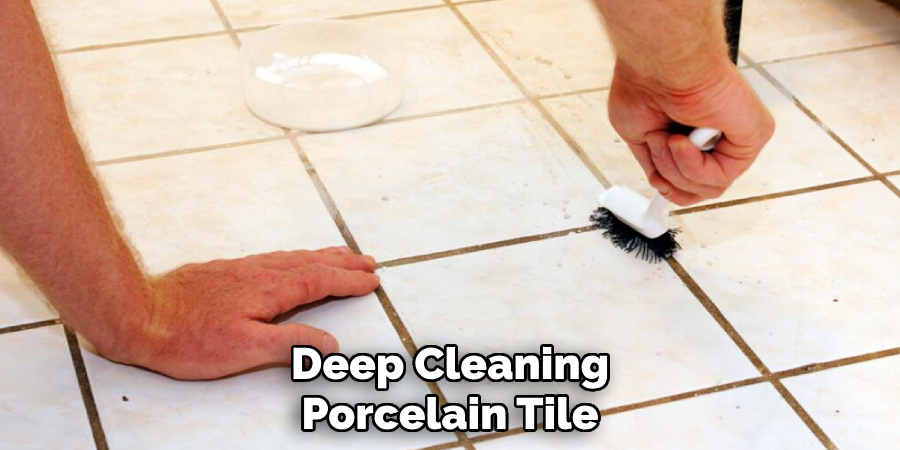
Cleaning Grout Lines
Grout Maintenance Importance
Grout plays a crucial role in the appearance and durability of tiled surfaces. Dirty or stained grout can significantly detract from the overall look of clean tiles, making routine maintenance essential. Proper care not only enhances the aesthetic appeal but also helps extend the life of your tiled surfaces by preventing moisture retention and mold growth.
Routine Grout Cleaning
For everyday cleaning, a simple and effective method involves using a baking soda and water paste or a grout-safe commercial cleaner. Apply the cleaning solution to the grout lines, then gently scrub using a toothbrush or a grout brush to remove dirt and residue. Once cleaned, rinse the area with water to remove any leftover cleaning agents, and ensure the grout is dried thoroughly to prevent water spots or damp patches.
Deep Grout Cleaning
For tougher stains or ingrained dirt, a more intensive approach may be necessary. A solution of hydrogen peroxide mixed with baking soda can be applied to stubborn grout lines. Allow the solution to sit for a few minutes before scrubbing and rinsing. To maintain cleanliness and prevent future staining or moisture damage, it’s a good practice to reseal grout lines annually. This step provides an added layer of protection and enhances the longevity of your grout.
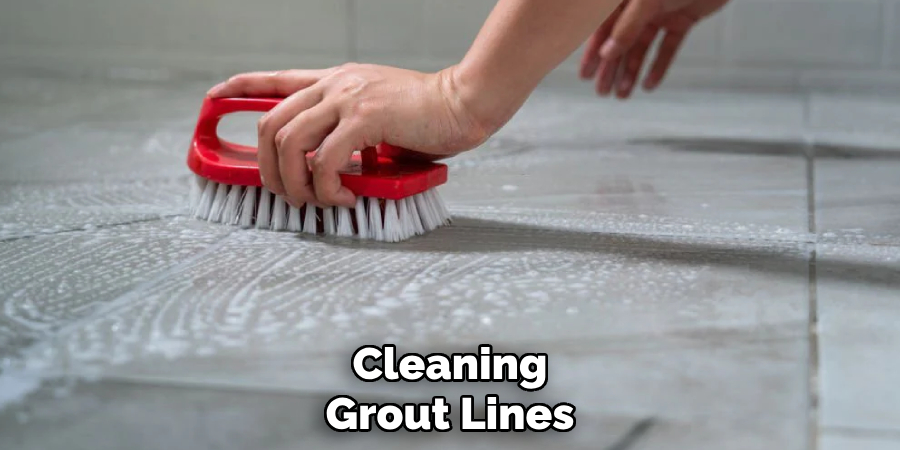
Stain and Spill Management
Quick Response is Key
Wiping spills immediately is crucial to prevent staining, especially on unglazed tiles. Prompt action keeps spills from penetrating the tile surface or grout lines, maintaining a clean and polished appearance.
Common Stains and Solutions
Grease: For grease stains, a solution of dish soap mixed with warm water works effectively. Apply it directly to the stain, then wipe it clean with a soft cloth or sponge.
Rust: Rust stains can be treated using a porcelain-safe rust remover. Gently follow the product instructions for optimal results without damaging the tile surface.
Hard Water Spots: For glazed tiles, use a vinegar solution to remove hard water spots. However, do not use vinegar on unglazed tiles, as it can cause damage to the finish. Always rinse thoroughly after application to avoid any residue.
Avoid Abrasive Tools
It’s important to steer clear of using steel wool or harsh scrubbing pads that can scratch or dull the tile surface. Opt for soft brushes, cloths, or sponges to clean effectively without causing damage. Proper care and tailored solutions ensure tiles remain in excellent condition over time.
Preventive Maintenance Tips
Protecting the Tile Surface
To preserve the quality of your tiles, consider using rugs or mats at entryways to minimize the dirt and grit that can be tracked indoors. This simple step greatly reduces wear over time. Additionally, place felt pads under furniture legs to prevent scratches and other damage when furniture is moved. These precautions are especially essential in high-traffic areas of your home.
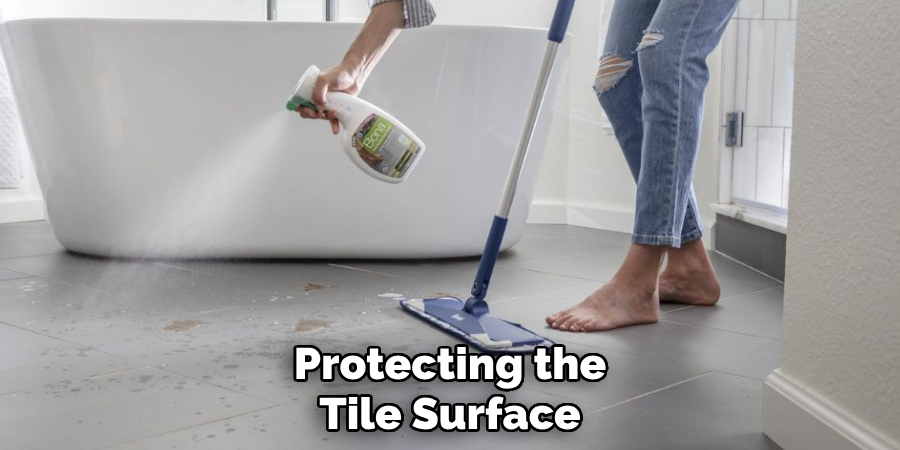
Managing Moisture
Moisture can be a major issue for tile longevity, particularly in areas like bathrooms and kitchens. To avoid mold and mildew formation, ensure tiles are dried promptly after use. Regularly wipe down wet surfaces to maintain both the appearance and structural integrity of grout and tiles. Proper airflow and ventilation also play a key role in managing excess moisture.
Sealing Tips
Unglazed tiles and grout lines often require sealing to maintain their resistance to stains and moisture. It’s recommended to apply a high-quality sealant every 1–2 years, depending on use and wear. Be sure to follow the manufacturer’s instructions precisely during application for optimal results. Proper sealing not only extends the life of your tiles but also simplifies routine cleaning, ensuring your surfaces look pristine over time.
Conclusion
Understanding how to care for porcelain tile is essential for preserving its durability and beauty over time. Key maintenance steps include regular sweeping to remove debris, mopping with a mild cleaner to tackle everyday grime, and periodic deep cleaning to address stubborn stains.
Don’t overlook grout care, as clean and well-sealed grout enhances both the appearance and longevity of your tiles. By staying consistent with cleaning routines and applying preventive measures, you can ensure your porcelain tile remains pristine and performs well for decades. With minimal upkeep, porcelain tile remains a highly practical and elegant flooring choice.
Specialization:
- Master of wheel-throwing, hand-building, and advanced glazing techniques
- Focus on creating both functional pottery and decorative art pieces
Recognition:
- Celebrated by collectors and art enthusiasts for creating one-of-a-kind pieces that blend artistry with functionality
- Participates in local and national exhibitions, earning accolades for his innovative designs and craftsmanship
Passion:
- Deeply committed to exploring and pushing the boundaries of ceramic artistry
- Continuously experiments with new materials, firing techniques, and artistic concepts to evolve his craft
Personal Philosophy:
- Believes in the transformative power of art, aiming to evoke emotions and connections through his ceramic creations
- Advocates for sustainability in ceramics, using eco-friendly materials and practices whenever possible


